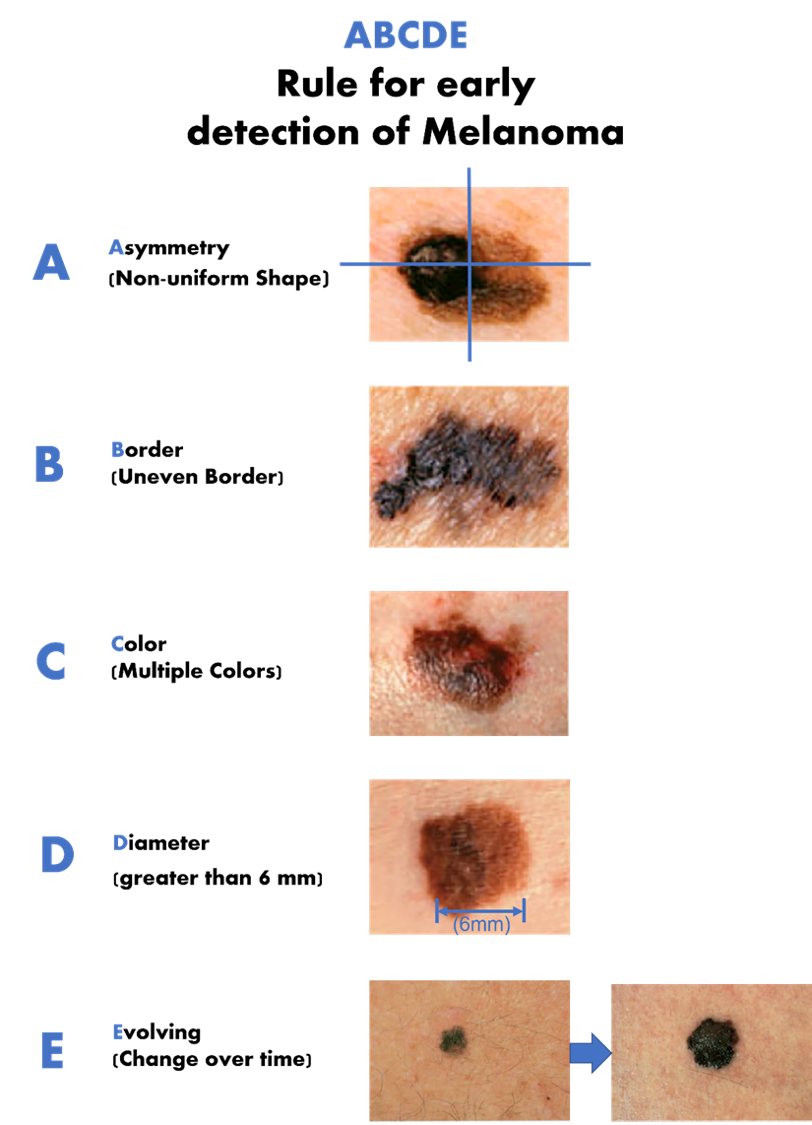One of the key objectives of the iToBoS project is to educate the general public about the most dangerous skin cancer melanoma and the visual signs that could help in early detection.
Finding melanoma at an early stage is crucial; early detection can vastly increase your chances of cure. Most moles, brown spots and growths on the skin are harmless – but not always. The ABCDE and the Ugly Duckling signs are common indicators that could help physicians and people, in general, to detect Melanoma. In these two blog post series, earlier we discussed ugly duckling signs, today we will introduce spotting melanoma using the ABCDE Method.
What is ABCDE Rule?
The ABCDE Rule of skin cancer is an easy-to-remember system for determining whether a mole or growth may be cancerous. The rules describe the physical condition and/or progression of any skin abnormality, which helps in determining whether it has features of cancer.
Five letters stand for
The first five letters of the alphabet are used as guides to help in identifying warning signs for melanoma.
- A is for Asymmetry: Normal moles are symmetrical. If you draw a line through the center, you will have two symmetrical halves. Cancerous Moles are typically asymmetrical, which means their shape is not uniform.
- B is for Border: A melanocytic naevus has smooth, even borders, whereas a melanoma often has irregular, blurry, or jagged edges and a hard-to-define border.
- C is for Color: Normal moles and spots are usually one color. A mole that has more than one color should be considered suspicious. Color changes can include the darkening of a spot (sometimes to dark purple or black) or lightening in certain parts of the growth.
- D is for Diameter: While it would be ideal to detect melanoma when it is still small, it is a warning sign if a pigmented skin lesion grows larger than 6mm in diameter, which is about the diameter of a standard pencil.
- E is for Evolving: Unlike most benign moles, melanoma tends to change over time. If you have a mole or skin growth, watch it for signs of changes.

If you notice any of the ABCDEs of melanoma, make an appointment right away to be evaluated by a dermatologist.
References
- Jensen, J. Daniel, and Boni E. Elewski. "The ABCDEF rule: combining the “ABCDE rule” and the “ugly duckling sign” in an effort to improve patient self-screening examinations." The Journal of clinical and aesthetic dermatology 8.2 (2015).
- Goldsmith, S. M., and A. R. Solomon. "A series of melanomas smaller than 4 mm and implications for the ABCDE rule." Journal of the European Academy of Dermatology and Venereology7 (2007).
- Combalia, Marc, et al. "Bcn20000: Dermoscopic lesions in the wild." arXiv preprint arXiv:1908.02288(2019).
- skincancer.org
- dermnetnz.org
